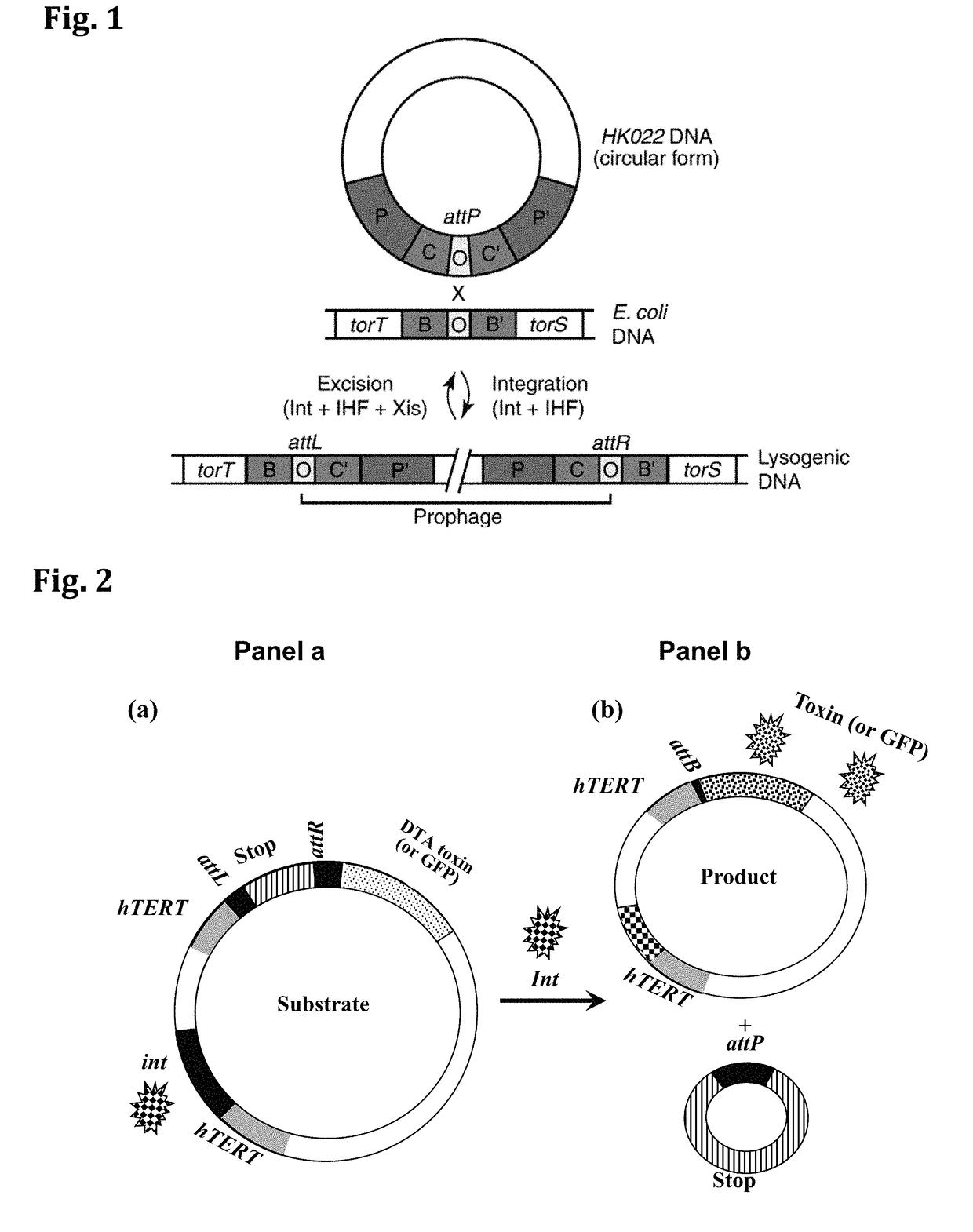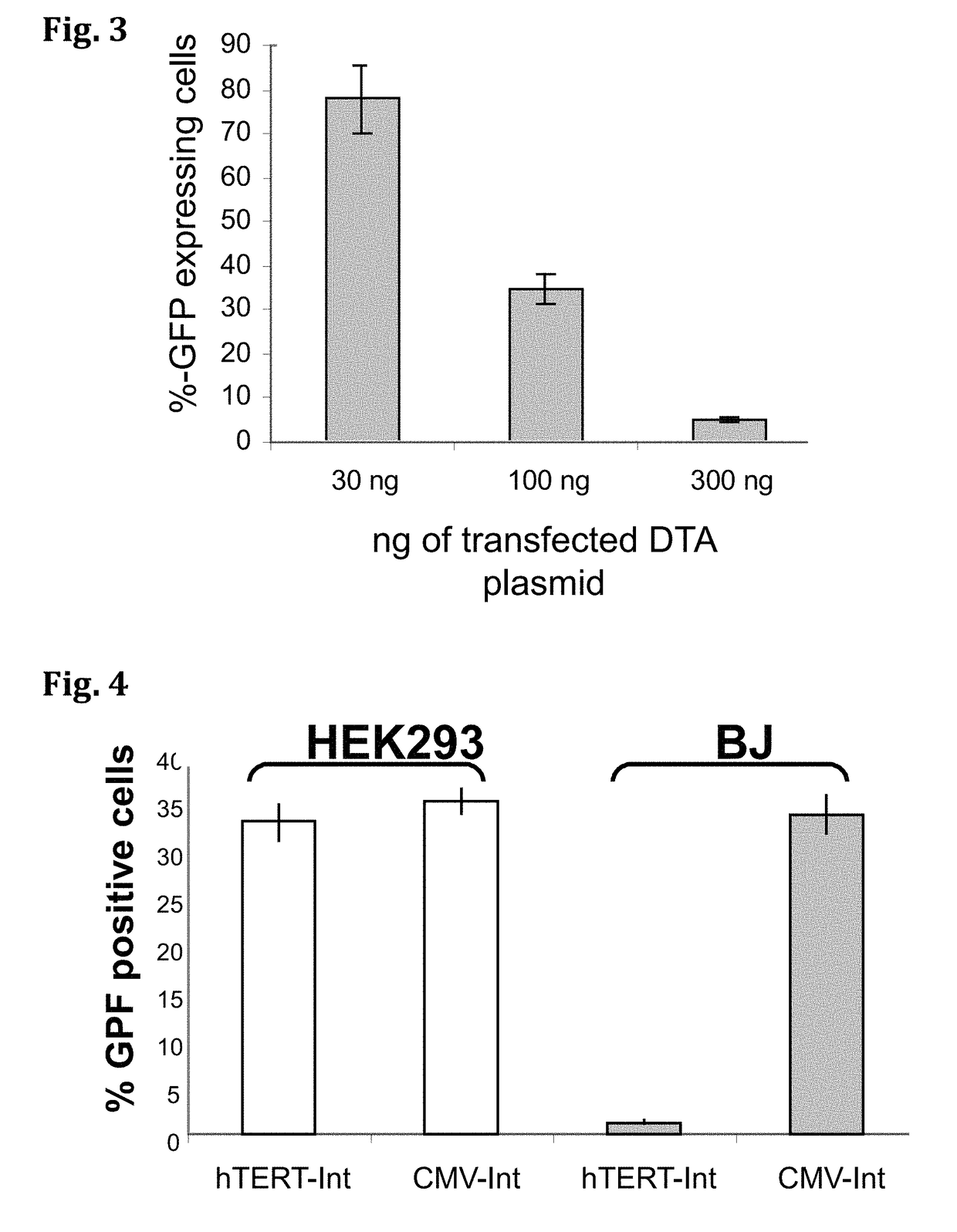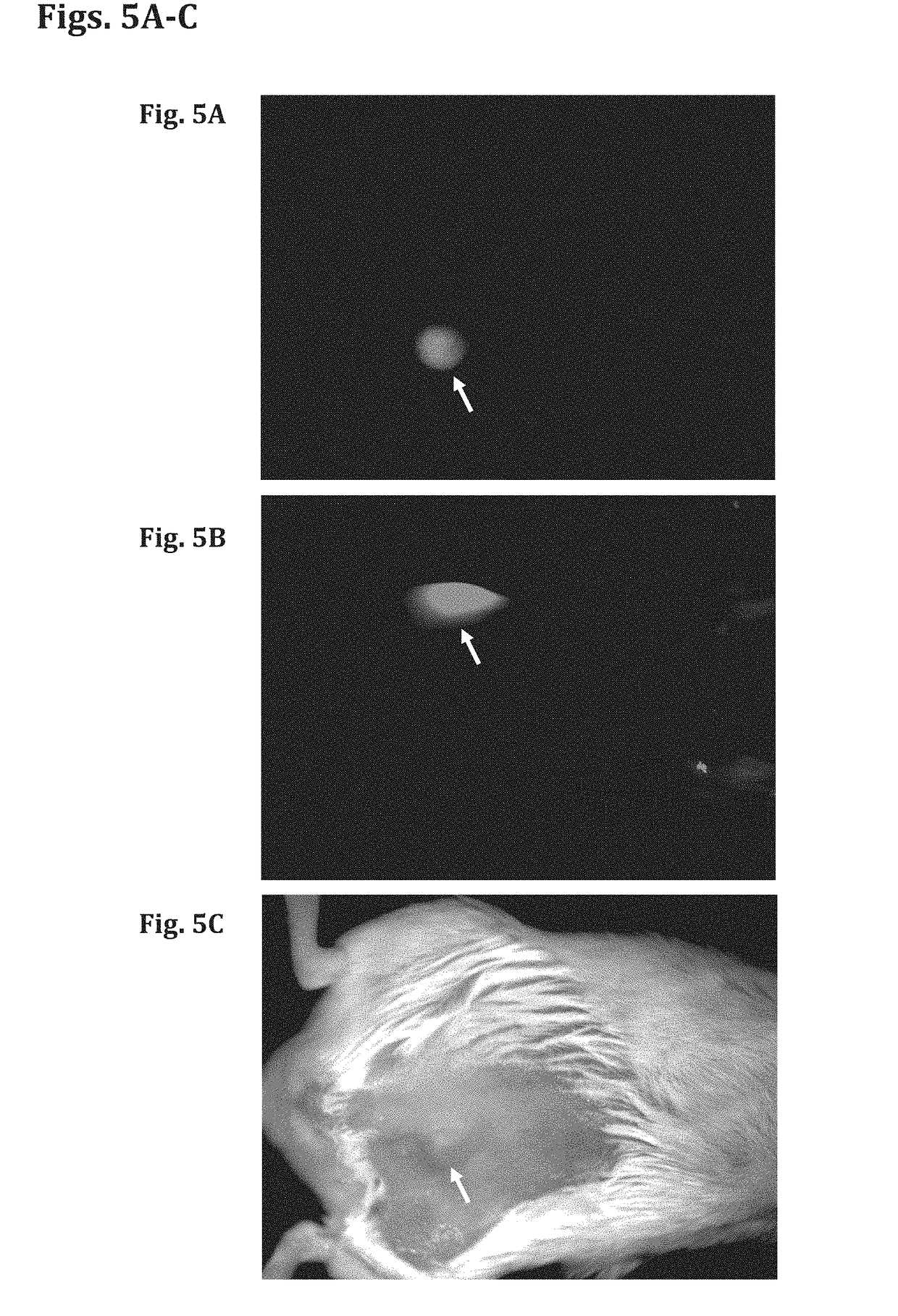Use of integrase for targeted gene expression
a technology of integrase and gene expression, applied in reverse transcribing rna viruses, biochemistry apparatus and processes, enzymes, etc., can solve problems such as complete reversibility, and achieve the effect of simple and efficient method of expression
- Summary
- Abstract
- Description
- Claims
- Application Information
AI Technical Summary
Benefits of technology
Problems solved by technology
Method used
Image
Examples
example 1
egrase-Dependent Expression Vectors of dta / Green Fluorescent Protein (GFP)
[0141]The HK022 integrase-dependent expression vector of the invention, pHTERT-int-pHTERT-attR-Stop-attL-dta, comprises an attL-Stop-attR recombination cassette (FIG. 1) inserted between the hTERT promoter and the open reading frame of the diphteria toxin (dta) gene (FIG. 2, Panel a). The “Stop” sequence, located up-stream to the dta gene, prevents the expression of the gene. Upstream to the hTERT promoter controlling the dta gene is the integrase (int) gene, also under the control of an hTERT promoter. The hTERT promoter controlling the dta and the int genes is activated only in cancer cells expressing hTERT. When expressed, the integrase excises the Stop terminator by a site-specific excision (FIG. 2, Panel b) which subsequently allows the expression of the DTA toxin.
[0142]A green fluorescent protein (GFP) reporter replacing the dta gene is used when monitoring the expression level (FIG. 2, Panel a).
example 2
of DTA in Human Cells
[0143]It has been shown by some of the inventors of the present invention, that the integrase HK022 can catalyze site-specific recombination reactions on the chromosomal level in human cell culture, including integrative as well as excisive reactions. In order to assess toxicity of DTA in human cells, the construct including the int and the dta genes were cloned under the constitutive CMV promoter. DTA expression was calibrated and its toxicity measured in human immortalized cells (line HEK293) that are considered to be cancerous (ATCC Catalog No. CRL-1573). The cells were co-transfected with increasing amounts of the plasmid expressing the dta gene, together with a GFP expressing plasmid. FIG. 3 shows the percentage of GFP expressing cells, as monitored by FACS, in co-transfected cells relative to cells transfected with GFP alone (co-transfected cells with (GFP and DTA plasmids) normalized to cells transfected with GFP alone). The results obtained show that tra...
example 3
ty of the hTERT Promoter to Cancer Cells
[0144]In order to assess the specificity of the hTERT promoter to cancer cells, the activity of the HK022 int gene regulated by the hTERT promoter in the immortalized (cancer) cell line (HEK293) was compared to that of the normal fibroblast cell line (BJ, ATCC Catalog No. CRL-2522). Each of the two cell lines were co-transfected with a pCMV-attR-Stop-attL-GFP reporter plasmid together with either of the two integrase expressing plasmids, namely the hTERT-Int or the CMV-Int plasmids. The Integrase catalyzes the attL×attR recombination and allows GFP expression which was monitored by FACS.
[0145]As seen in FIG. 4, in the immortalized cell line (HEK293), the integrase was active both when regulated by the CMV promoter and when regulated by the hTERT promoter, whereas in the normal cells (BJ) only the constitutive CMV-promoter activated the integrase and consequently facilitated GFP expression. Hence, the activity of the hTERT promoter was shown to...
PUM
| Property | Measurement | Unit |
|---|---|---|
| pharmaceutical composition | aaaaa | aaaaa |
| catalytic | aaaaa | aaaaa |
| fluorescence | aaaaa | aaaaa |
Abstract
Description
Claims
Application Information
 Login to View More
Login to View More - R&D
- Intellectual Property
- Life Sciences
- Materials
- Tech Scout
- Unparalleled Data Quality
- Higher Quality Content
- 60% Fewer Hallucinations
Browse by: Latest US Patents, China's latest patents, Technical Efficacy Thesaurus, Application Domain, Technology Topic, Popular Technical Reports.
© 2025 PatSnap. All rights reserved.Legal|Privacy policy|Modern Slavery Act Transparency Statement|Sitemap|About US| Contact US: help@patsnap.com



